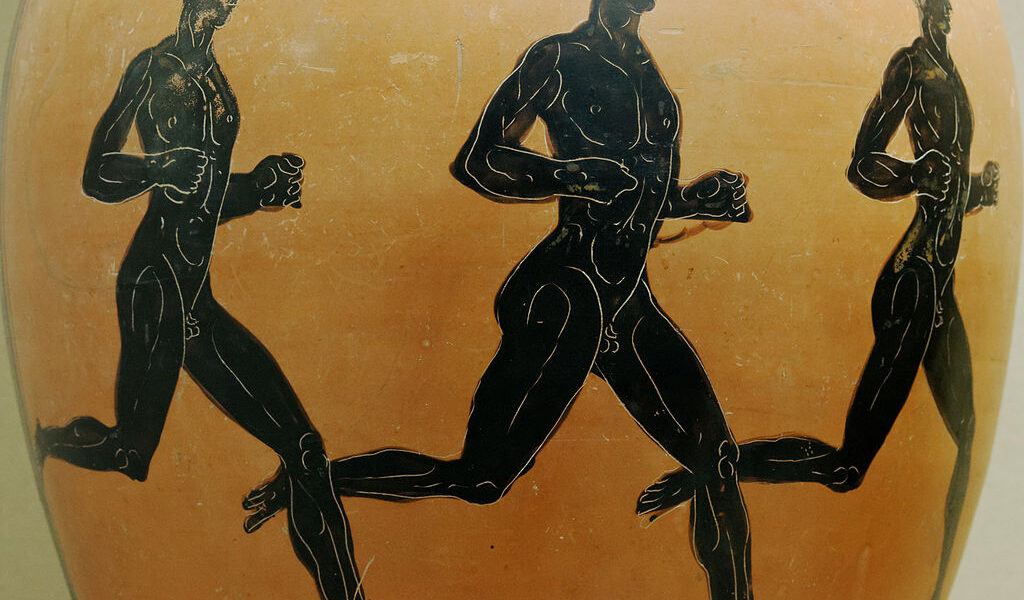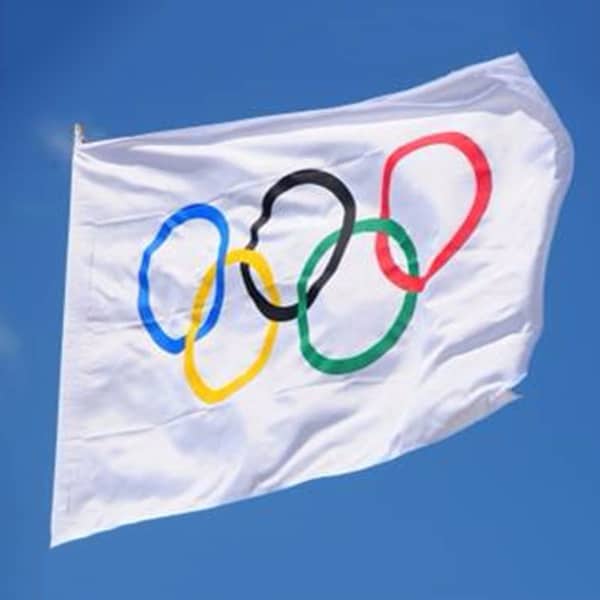The ancient Olympic Games (Ὀλυμπιακοὶ ἀγῶνες) were primarily a part of a religious festival that was in honour of Zeus, the father of the Greek gods and goddesses.
The festival and the games were held in Olympia, an ancient rural sanctuary site in the western Peloponnesos dedicated to the worship of Zeus.
The sanctuary was named in antiquity after Mt. Olympos the highest mountain in mainland Greece. In Greek mythology, Mt. Olympos was the home of the greatest of the Greek gods and goddesses.
Olympia is listed by UNESCO as a World Heritage Site.

According to some literary accounts, ancient Olympic Games began in the year 776 BC, when Koroibos, a cook from the nearby city of Elis, won the stadion race, a foot race 600 feet long.
However, contrary evidence, both literary and archaeological, suggests that the games may have existed at Olympia much earlier than this date, perhaps as early as the 10th or 9th century BC.
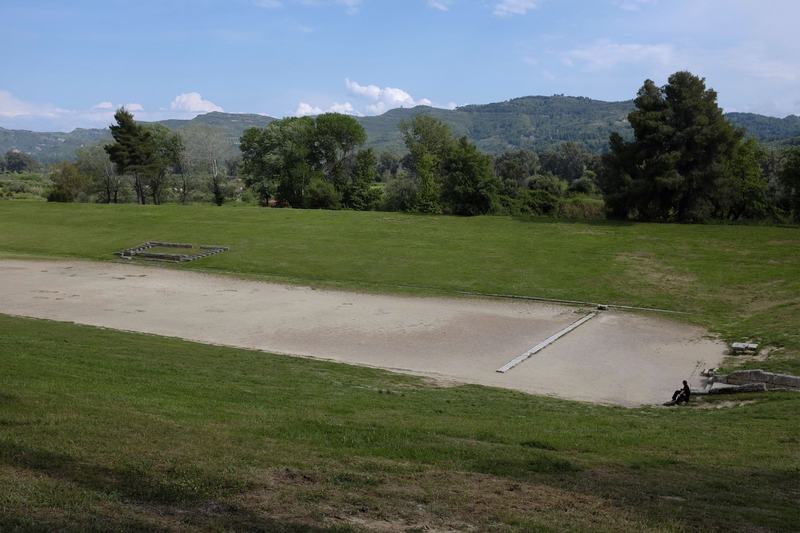
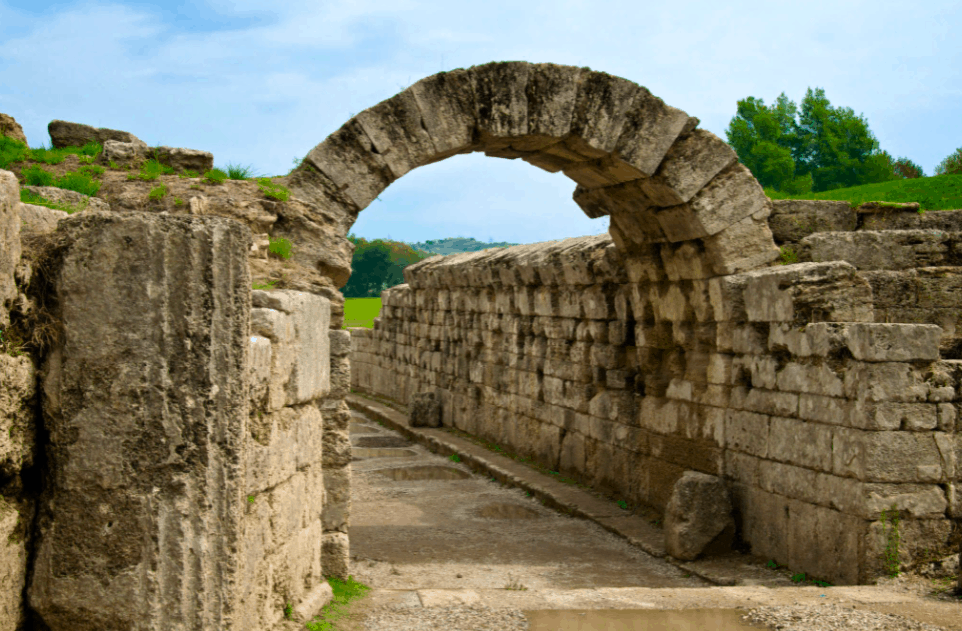
From 776 BCE to 393 CE the games were held every four years, or Olympiad, which became a unit of time in historical chronologies.
They continued to be celebrated when Greece came under Roman rule, 2nd century BC.
Their last recorded celebration was in AD 393, under the emperor Theodosius I, but archeological evidence indicates that some games were still held after this date.
The games likely came to an end under Theodosius II, possibly in connection with a fire that burned down the temple of the Olympian Zeus during his reign.
The Ancient Olympic Athletes
The Greeks that came to the Sanctuary of Zeus at Olympia shared the same religious beliefs and spoke the same language.
The athletes were all male citizens of the city-states from every corner of the Greek world, coming from as far away as Iberia (Spain) in the west and the Black Sea (Turkey) in the east.
Only freeborn Greek men were allowed to participate, although there were victorious women chariot owners. As long as they met the entrance criteria, athletes from any Greek city-state and kingdom were allowed to participate.
During the celebration of the games, an Olympic Truce was enacted so that athletes could travel from their cities to the games in safety.
Ancient Olympic Prizes
The prizes for the victors were olive leaf wreaths or crowns.
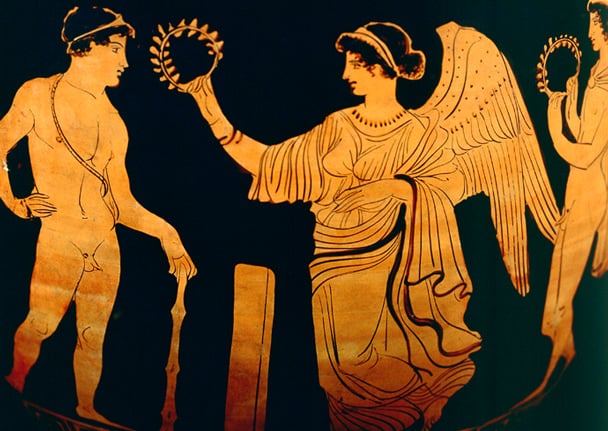
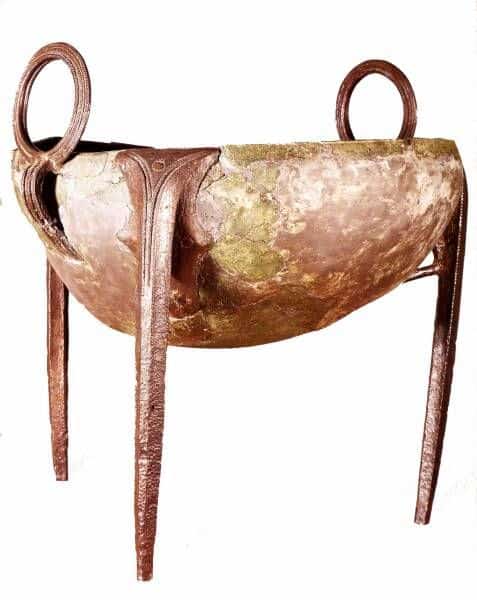
A series of bronze tripods have been found at Olympia, some of which may date to the 9th century BC, and it has been suggested that these tripods may in fact have also been prizes for some of the early events at Olympia.
The Ancient Olympic Programme
The ancient Olympic Games were initially a one-day event until 684 BC, when they were extended to three days.
Additional athletic events were gradually added until, by the 5th century BC, the religious festival consisted of a five-day programme.
The ancient Games included running, long jump, shot put, javelin, boxing, pankration (an ancient version of modern-day mixed martial arts) and equestrian events.
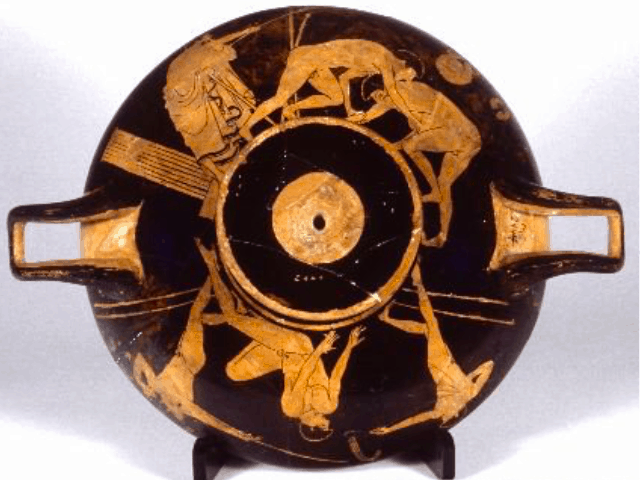

The Marathon
The marathon was not an event of the ancient Olympic games. The marathon is a modern event that was first introduced in the Modern Olympic Games of 1896 in Athens, a race from Marathon northeast of Athens to the Olympic Stadium, a distance of 40 kilometres.
The race commemorates the run of Pheidippides, an ancient "day-runner" who carried the news of the Persian landing at Marathon of 490 B.C. to Sparta (a distance of 149 miles) in order to enlist help for the battle. According to the fifth century B.C. ancient Greek historian Herodotus, Pheidippides delivered the news to the Spartans the next day.
The distance of the modern marathon was standardised as 26 miles 385 yards or 42.195 km. in 1908 when the Olympic Games were held in London. The distance was the exact measurement between Windsor Castle, the start of the race, and the finish line inside White City Stadium.

Nudity at the Olympic Games
It is thought that the Homeric athletes in The Iliad and the first ancient Olympians in 776 BCE originally wore loincloths to compete in.
There are two stories relating to the question of nudity at the ancient Olympic Games.
One story states that it was a runner from Megara, Orsippos or Orrhippos who, in 720 B.C. was the first to run naked in the stadion race when he lost his shorts in the race.
Another story claims that it was the Spartans who introduced nudity to the Olympic Games in the 8th century B.C. as it was a Spartan tradition to exercise in the nude.
It is not clear if the very first recorded victor at Olympia, Koroibos, who won the stadion race in 776 B.C. wore shorts or not.
It seems fairly clear that by the late 8th century nudity was common for the male contestants.
From Ancient to Modern Times
Although the ancient Games were staged in Olympia, Greece, from 776 BC through 393 AD, it took 1,503 years for the Olympics to return.
The first modern Olympics were held in Athens, Greece, in 1896.
The man responsible for its rebirth was a Frenchman named Baron Pierre de Coubertin, who presented the idea in 1894.
His original thought was to unveil the modern Games in 1900 in his native Paris, but delegates from 34 countries were so enthralled with the concept that they convinced him to move the Games up to 1896 and have Athens serve as the first host.
The Olympic Flame
There was no torch relay in the ancient Olympic Games. There were known, however, torch relays in other ancient Greek athletic festivals including those held at Athens.
The idea of the Olympic torch or Olympic Flame was first inaugurated in the 1928 Olympic Games in Amsterdam.
The modern Olympic torch relay was first instituted at the 1936 Olympic Games in Berlin.
The Olympic Oath
The Olympic Oath was introduced in 1920.
The current wording of the Olympic Oath is:
We promise to take part in these Olympic Games, respecting and abiding by the rules and in the spirit of fair play, inclusion and equality. Together we stand in solidarity and commit ourselves to sport without doping, without cheating, without any form of discrimination. We do this for the honour of our teams, in respect for the Fundamental Principles of Olympism, and to make the world a better place through sport.
The Olympic Flag
The Modern Olympic flag of five linked rings, each with a primary colour used in the flags of the nations competing in the games, was introduced in 1908. There is no ancient basis for this modern symbol.
Winter Games
There was no winter Olympic festival in ancient times.
Separate Winter Games were first authorised in 1911 to be held in 1916, but due to World War I they didn't occur until 1924, in Chamonix.
The first modern Winter Olympic games were held in 1924 in Chamonix, France.
Starting with Lillehammer in 1994, it was decided that every other year will be an Olympic year (with Summer and Winter Games alternating), rather than holding Summer and Winter Games every 4th year. This was done to accommodate TV networks and audiences.
Japanese ambassador in Greece presents awards to team which lit Tokyo 2020 Olympic Flame

